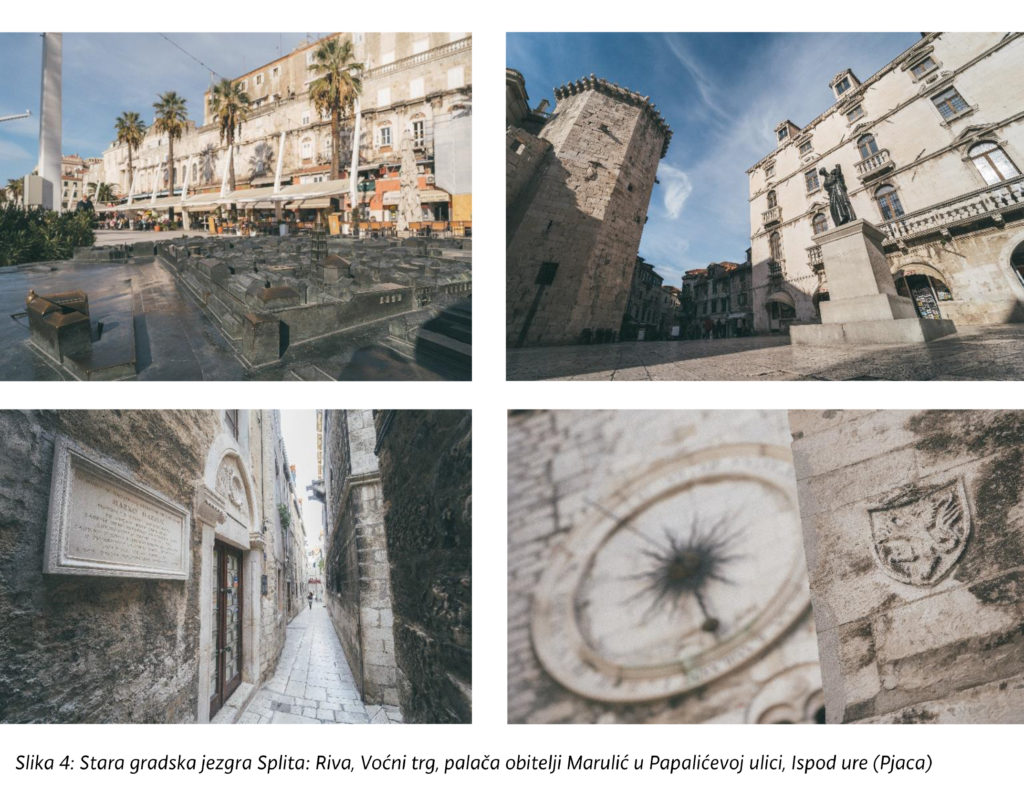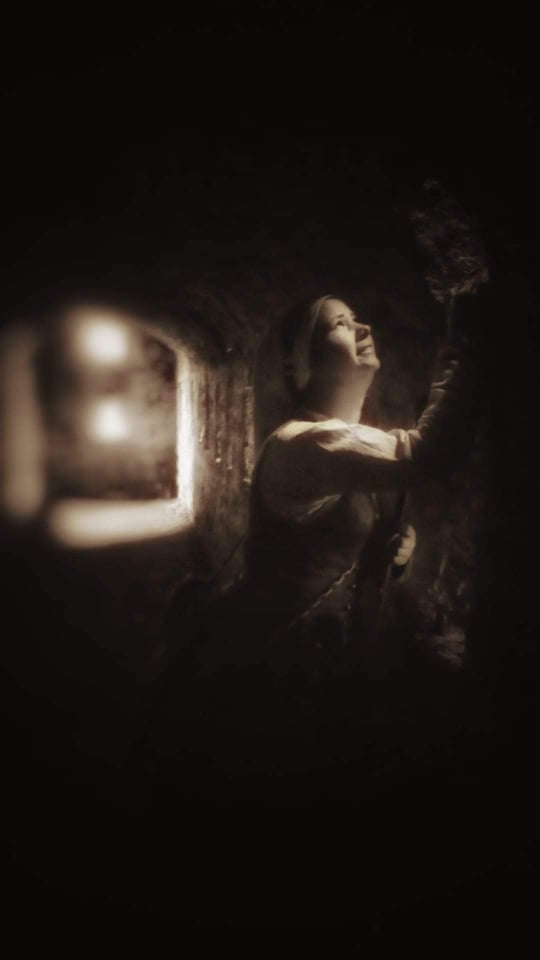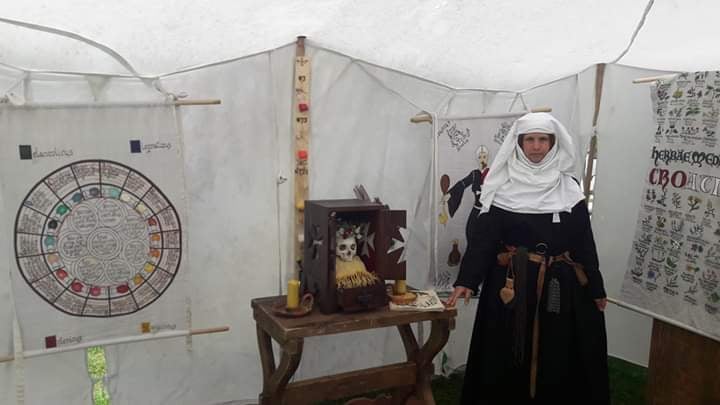This post is also available in: Croatian
Today, on 22nd April, we celebrate Croatian Book Day by remembering Marko Marulić, the author of the epic poem Judita (Judith), one of the most significant Croatian literary works that he finished writing in Split on an exact date back in 1501.
On the occasion of the 500th anniversary of the publishing of Judita, the Croatian Parliament announced that 2021 will be “The Year of Mark Marulić.” To celebrate the occasion, the Dalmatia – Storytelling Destination Project, The City Museum of Split, in cooperation with storytelling guide Gorana Galić designed a costume storytelling tour featuring Bira Marulić. Simultaneously, another storyteller, Nataša Bulić, leads a storytelling tour named Following the steps of Marko Marulić.

For Marko Marulić – one of the greatest Croatian writers – Split was a treasure trove of inspiration.
A poet, writer, and the father of Croatian literature are just a few synonyms for this great man, the guardian of Split’s heritage and one of the most prominent citizens of this town. While he grew into one of the most reputable humanists and philosophers during his stay in Venice, his life in Split awoke his poetic soul. The beauties of this Renaissance town were his eternal muse. Antiquities, Renaissance palaces, and ships arriving in Split’s harbor from all over the world enriched his soul with new discoveries and experiences. They say that spirituality is one of the greatest virtues of humankind. For Marulić, the sense of humor of Split residents was a source of inspiration for his satiric poetry. As young noblewomen from Split adored his playful spirit, he also “composed” love sonnets inspired by their beauty.

He is the author of the first tourist guide through Split that emphasized the beauty of Peristyl. However, there is also a darker side to his work. As his city was exposed to a threat of the Ottoman Invasion, he contemplates the true freedom that resides in the human heart. He was especially inspired by Judita, a Biblical character of a widow fighting for Betulia. He named his masterpiece from the 16th century after her. Also, he wrote this epic poem in Split dialect to bring Judith closer to his fellow citizens. Interestingly, he coined a new term – psychology – that he uses in his verses for the first time in history. The statue of Marko Marulić, sculpted by the famous sculptor Ivan Meštrović, stands on Voćni trg (a square in Split), reminding us of the importance of preserving personal freedom.

A storytelling walk – Following the steps of Marko Marulić
This storytelling walk will take the participants to places where Marulić found his inspiration and felt a whole spectrum of emotions. This is a 60-minute walk starting in the old city nucleus, near the Diocletian’s Palace and picturesque squares. The starting point is in front of the Marulić family palace. Then, it leads us to the historic trg Svetog Lovre, today popularly known as Pjaca, where once Venetian authorities resided. The walk ends on the famous Split’s Peristyl, once a center of the Diocletian’s Palace and an everflowing source of inspiration for Marulić. This tour is also suitable for the elderly. Please visit www.ichtisonline.com for more information.

Exhibition announcement of “Judita 500” exhibition on the occasion of the 500th anniversary of the first printed edition of Judita
The City Museum of Split, in cooperation with Marulianum – The center for studying Marko Marulić and his humanist circles and the City Library Marko Marulić, under the auspices of the City of Split, organizes an exhibition dedicated to Marulov ep (Marul’s epic poem) Judita 500. For the first time, the visitors will get a chance to see the first four out of five initial editions of Judita, published in Split in the 16th and 17th centuries – in 1521, 1522, 1586, and 1627. Also, a reproduction of the 3rd edition from 1523, from the State Library in München, will be exhibited.
At the moment, the event has been postponed due to epidemiological reasons.
Please visit https://www.mgst.net/naslovnica/najava-izlozbe-judita-500/ for more information.

A story about a revived historical personality – Bira (Elvira) Marulić
The City Museum of Split is located in the northeastern part of Diocletian’s Palace, in the Renaissance-Gothic palace of the Papalić family. Its courtyard, loggia, well, and ceremonial hall are considered one of Split’s most beautiful cultural monuments. We will introduce you to the exhibits of the Museum in the Museum Lobby and tell you a story of one of the most famous Croatian philosophers, writers, and the father of Croatian literature, Marko Marulić. Already in the 15th century, the owner of the palace, nobleman Papalić and Marko Marulić collected and studied ancient texts from Salona (modern-day Solin), imbedded in the palace walls.
The walk continues to the Gothic ceremonial hall on the first floor, where one can learn in detail about the life of Marko Marulić, his source of inspiration, and the work of his fellow humanists. A critical figure in Marko Marulić’s circles was his sister Bira. Renaissance women had two options – to marry or to join a religious order. Bira decided to join the Benedictine order sisters and spend the rest of her life in a convent near the Diocletian’s Palace. Marko Marulić dedicated many of his works to his sister and other nuns. One of them is Anka Satira. The texts reveal that Bira was one of the first educated nuns. Her brother Marko wrote poems for them in Croatian variation of his satire. Marko Marulić was so close to his sister that he left behind a Gospel that he illustrated for her. The storytellers tell a story about Marko Marulić, Judita, Renaissance Split, and the Ottoman Invasion through the eyes of his sister Bira.
From the Gothic hall, the tour continues to the terrace where emblems of Split’s aristocratic families are preserved. Visitors will learn about the ways of living in “the most beautiful city in the world” and interesting facts about the status and activities of noblemen.
The tour ends in the magazine located in the basement of the palace. Since Split was exposed to a constant threat of the Ottoman siege in the 15th and 16th centuries, it is also worth hearing a story about the war with Turks and the heroic defense of Split.

DALMATIA – STORYTELLING DESTINATION
Revival of storytelling in museums and institutions dedicated to preserving cultural heritage is a unique project in Croatia and Europe. In Dalmatia, as a storytelling destination, 14 characters of the area’s rich heritage have been revived. In addition to this project, 23 themed tours have been created. This project, intended for tourists and the local population, is focused on providing authentic experiences of cultural heritage through storytelling. These commercial guided tours will be available through the County’s storytelling platform that offers storytelling tours led by knowledgeable and certified guides wearing costumes. The project aims to preserve and publicize Dalmatian cultural heritage and create attractive 365 tourist offers in Splitsko–Dalmatinska County.
Storytelling guides:
Storytelling walk – Following the steps of Marko Mrulić: Nataša Bulić
A story about a revived historical personality – Bira (Elvira) Marulić: Gorana Galić
Photo credits: Dalmatia – Storytelling destination, the archive of storytelling guides
This post is also available in: Croatian
